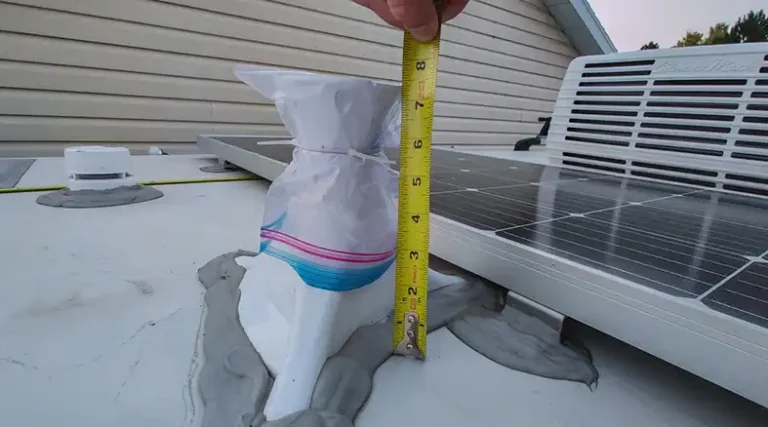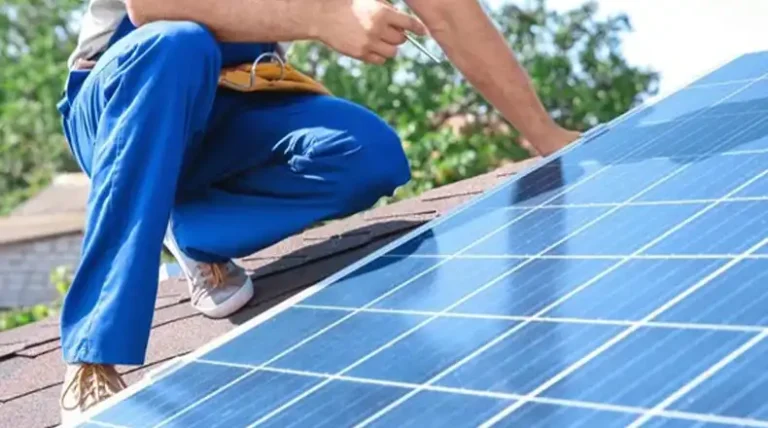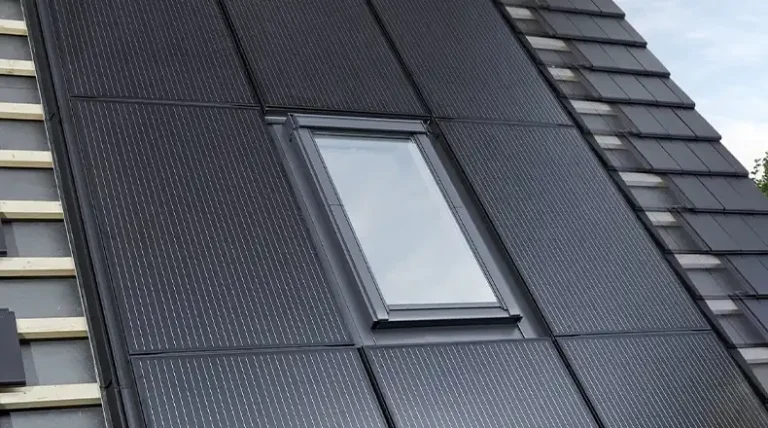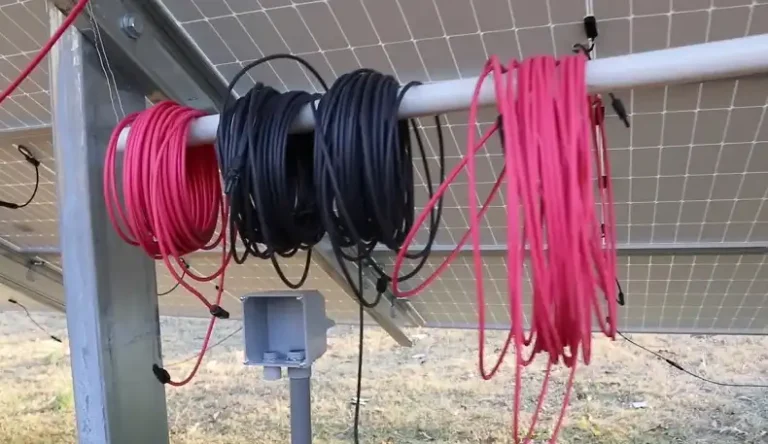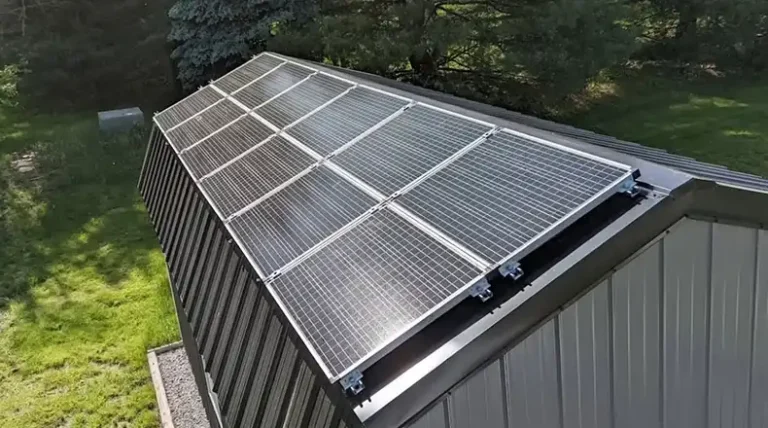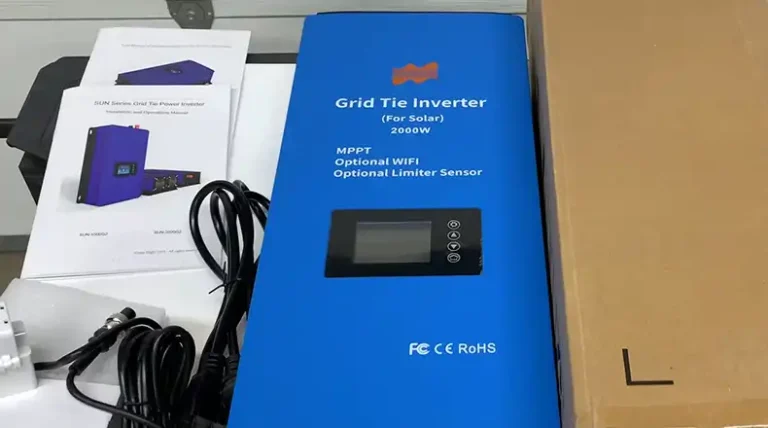Can You Put Solar Panels on Both Sides of the Roof?
Installing solar panels on your roof can seem like a daunting task. With so many options to consider, one common question homeowners have is: can you put solar panels on both sides of your roof?
Fortunately, the answer is yes, you can install solar panels on both the front and back sides of your roof. However, there are a few important factors to consider before deciding if dual-sided solar is right for your home. Carefully weighing the pros and cons of a dual-sided system will ensure you make the most efficient and cost-effective decision.
To gain a deeper understanding of dual-sided solar and determine if it could benefit your home, keep reading!
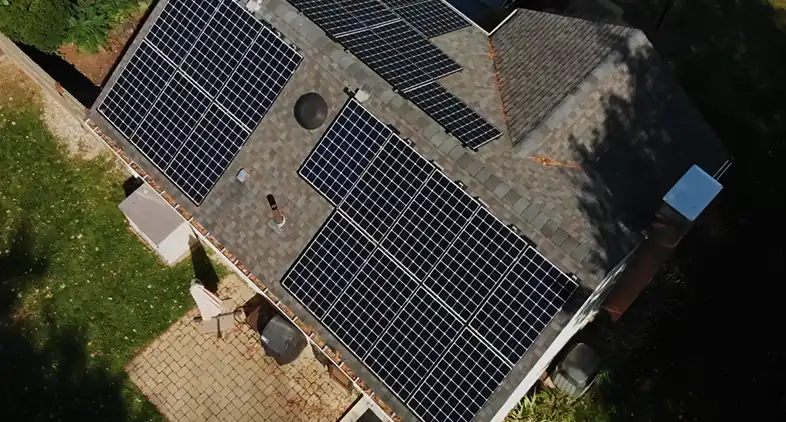
What Does It Mean to Put Solar Panels on Both Sides of Your Roof?
Putting solar panels on both sides of your roof means installing photovoltaic (PV) solar panels on the front and back sides of your roof planes. This is also referred to as a bi-facial solar system.

In a typical solar installation, panels are mounted facing one direction on the roof, angled to maximize sun exposure. The south-facing roof plane is most common for solar in the northern hemisphere, as it receives the most direct sunlight exposure.

A bi-facial or dual-sided solar system has panels installed on multiple roof planes, such as south and north, or east and west-facing roofs. This allows the system to capture more sunlight throughout the day from different angles as the sun’s position changes.
When to Consider Dual-Sided Solar Panels?
Installing solar on both sides of your roof can maximize sunlight capture compared to a single-plane system. However, there are a few key considerations to weigh before choosing dual-sided solar:
1. Efficiency and Energy Production

- Dual orientation can increase efficiency by 10-25% over a single roof plane, depending on your location and roof layout. More sun exposure = more energy production.
- You’ll need to calculate the sunlight profile for each roof plane to estimate production. Use a solar tool or speak to an installer.
- Consider shading on different sides of the home throughout the day. Unshaded east/west may outperform partially shaded south roofs.
- Panel technology affects bi-facial system performance too. Monofacial vs bifacial panels have different dual-side outputs.
Cost and Roof Space
- Dual-sided systems require around 20-30% more panels to offset lower panel efficiency from indirect light.
- Additional panels, labor, and complex racking can add 20-30%+ to the overall system cost.
- Check you have sufficient unshaded roof space on multiple planes for all the panels needed.
- Weigh extra costs against long-term energy production and bill savings benefits.
Aesthetics and Visibility
- Panels on the front of the home are more visible than the backyard. This may be a pro or con aesthetically.
- Consider visibility from the street, impact on the home exterior, and curb appeal before installing the front roof solar.
- Can panels be seen from interior rooms? You’ll see panels from more rooms with dual vs single-sided install.
- Options like solar shingles can help panels blend better vs racks/frames if visibility is an issue.
Roof Design and Structural Factors

- Your roof layout and angles impact suitability for dual-plane solar.
- South/west or east/west combos work best in the northern hemisphere. North panels produce much less.
- Roof type (e.g. gable, hip, flat) and roofing material (e.g. asphalt, tile, metal) also affect installation costs.
- Verify roof structure can handle the additional weight load of extra panels properly.
The Pros and Cons of Installing Solar Panels on Both Sides of Your Roof
Weighing the key advantages and disadvantages of dual-sided solar can provide greater clarity on whether it’s the right system for your home and your priorities:
Potential Advantages
- Harvests more sunlight and maximizes solar production from multiple roof planes.
- Less shading from obstructions like trees on one side of the home.
- Can achieve full solar offset with fewer panels if roof space is limited on one plane.
- Provides energy production through more hours of the day as sun angles change.
- Optimizes solar on varied roof designs like L-shaped homes or large dormers.
Potential Disadvantages
- Added install costs from extra panels, labor, and racking systems. The payback period may be longer.
- Visibility and aesthetic issues with panels on the front of the home. More visual impact overall.
- Additional roof penetrations and attachments are required. Potential for roof leaks down the road.
- Obtaining grid connection permission for a larger system may be more challenging.
- Monitoring and maintenance are more complex across different roof planes.
- Rear panels produce less due to only receiving indirect/reflected light.
Key Factors That Impact the Performance of Dual-Sided Solar
Several variables beyond roof orientation affect the efficiency and cost-benefit analysis of adding solar to both sides of your roof. Being aware of these factors will help tailor the right system design for your particular home.
Your Home’s Grid Connection Limit
Most utilities only allow small residential solar systems to feed a certain amount of kW capacity back into the grid. Once your planned solar system size exceeds this limit, additional approval steps are required which can complicate dual-sided projects. Understanding your grid limit early helps right-size the system.
Your Electricity Usage and Solar Offsetting Goals
Analyze your household energy use patterns and determine how much solar production you want to offset. This will help calculate how many panels are needed and whether dual planes are required to achieve your solar goals within space constraints.
Local Weather, Climate and Sunlight Availability
Your regional climate plays a big role in solar performance. For example, southwest locations like Arizona will harvest far more energy from west-facing panels than northeast states due to more sunlight and intense evening sun angles.
Panel Technology Choices
Standard monofacial solar panels only capture sunlight from their front surface. Bifacial panels absorb light on both sides, boosting the performance of dual-plane systems. But they come at a higher equipment cost.
Roof Type, Age, and Condition
Houses with older or deteriorated roofs may require repairs or reinforcement to handle the additional weight of solar on two planes. The type of roofing material also impacts attachments and racking.
Nearby Trees, Buildings, and Shading Structures
Consider the location of trees and other objects that can cast shade on parts of your roof throughout the day. Smart placement is key for dual-sided success.
Is Dual-Sided Solar Right for My Home?
If you’re still undecided about installing solar on both sides of your roof, here are a few key questions to ask yourself to help make the determination:
- Do I have suitable unshaded roof space on multiple planes to accommodate all the additional panels required?
- Is the upfront cost increase of dual-sided solar justified by the additional long-term energy bill savings?
- Am I comfortable with how much more visible front roof solar panels will be?
- Does my roof layout maximize production from east/west or other dual orientations?
- Can my older roof support the weight load or does it need structural upgrades first?
- Do I want to maximize solar production throughout the day to offset high energy use?
Carefully weighing your home-specific factors will dictate whether dual-sided is the best system design for your needs and priorities. An experienced solar contractor can assess your home and provide design recommendations to help decide.
While dual-sided solar is not right for everyone, for many homeowners the additional upfront investment pays off over the long term by slashing energy bills through greater sunlight harvesting.
In Conclusion
For some homeowners, the added energy production, limited roof space, or irregular roof design makes dual-sided solar the optimal system choice despite higher initial installation costs. For others, a single roof plane maximizes their solar goals more affordably. Weigh the pros and cons outlined here for your particular situation. Use available solar tools to estimate and compare energy output. An experienced solar installer can assess your home and provide recommendations to identify the best solar setup for you. With smarter design choices, expanded roof solar can maximize your clean energy potential. Thanks for reading! We hope this overview gave you the clarity needed to decide if bi-facial solar is right for your home. Please leave us a comment below if you still have any other questions.
Frequently Asked Queries
Q: What Is The Ideal Roof Orientation For Dual-Sided Solar?
A: The ideal roof orientation is south and west facing or east and west facing. This maximizes sun exposure from morning to evening. North-facing panels produce much less energy.
Q: Do I Need A Bigger Inverter For Solar On Two Roof Planes?
A: Maybe. Your inverter capacity must match your total solar array output. More panels usually require a larger inverter, but an installer can specify the right size.
Q: Can Any Solar Panels Be Used In A Dual-Sided System?
A: Most standard solar panels can be installed on two roof planes, but bifacial panels that absorb light on both sides will enhance performance.
Q: How Much Roof Space Do I Need For A Dual-Plane Solar System?
A: You’ll generally need 20-30% more total roof space compared to a single-plane system since additional panels are required.
Q: Does Dual-Sided Solar Work With Roof Types Like Flat Or Tiled Roofs?
A: Yes, though installation methods, racking, and costs will vary by roof type. An angled roof is still ideal for pointing panels toward the sun.

